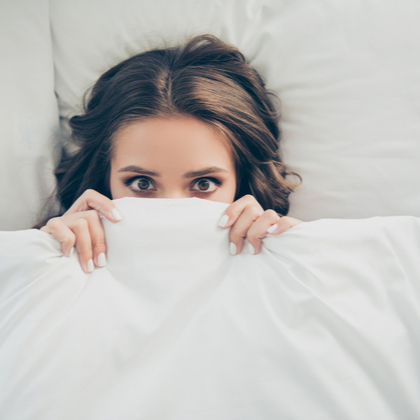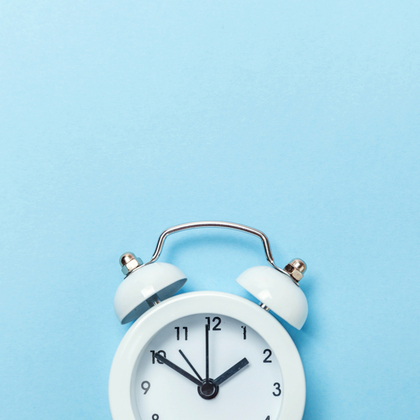
Some people may perceive napping as indulgent – lazy, even – a view perpetuated by our work-hard, sleep-less culture. But taking a nap isn’t ever something we should ever feel guilty about. Aside from supporting energy, alertness, and productivity, new research suggests a post-lunch siesta could also be the secret to long-term brain health (1).
What is a power nap?
A power nap is a popular phrase used to describe a short sleep, usually during the day. The term “power” is used to describe the energy boost that some people gain from a short daytime sleep when they are feeling fatigued.
What are the benefits of napping?
There are many reasons to nap more. Microsleeps can reduce fatigue and counteract daytime drowsiness (2).
They can also increase workplace productivity and performance (3). Even a 10-minute nap can improve logical reasoning, memory, and communication.
Napping can enhance physical performance, too (4). Athletes often use naps to improve endurance, cognitive performance, and reaction times.
Daytime dozing is also widely advocated by shift workers, many of whom struggle to get enough sleep and have to be alert at unusual times.
How does napping impact the brain?
Aside from general health, new research conducted at UCL and the University of the Republic of Uruguay in June 2023 suggests daily napping may protect the brain as it ages (5).
The study found an interesting correlation between habitual daytime napping and larger total brain volume – the equivalent of 2.6 to 6.5 fewer years of ageing – which could mean regular napping may provide a buffer against neurodegeneration.
Overall, these findings suggest a short daytime nap could be the missing piece of the puzzle when it comes to preserving cognitive health as we get older.
How long should a nap be?
For short-term alertness, stick to a 20-minute nap. This burst of shuteye will deliver enough restoration without entering deep sleep and interfering with night-time rest or leaving you dazed.
If, however, you’re feeling especially fatigued, you could take a full 90-minute sleep cycle, so your body can enter deep, nourishing REM sleep. Just make sure you don’t nap for this long too late in the day as it might fragment your sleep at night.
When is the best time to take a nap?
Most sleep experts advise taking a short nap between 12 pm and 2 pm as it matches the dip of your circadian rhythm, so try to squeeze in some shut-eye during these hours. Plus, if you’ve napped by 2 pm, you can make the final window of the day more productive.
Napping do’s and don’t
Napping can often be a double-edged sword. Sometimes, a nap can leave you groggier and drowsier than before you hit the pillow. At other times, it can supercharge your mood, energy levels, and productivity.
While both these outcomes may be true, there’s no reason you can’t consistently reap the benefits of napping. You just need the correct application.
Try a ‘caffeine’ nap
You could even take a ‘caffeine nap’: having a coffee and taking a 20-minute nap shortly afterwards. You should feel the energising effects of the caffeine as soon as you wake up.
That said, it’s worth stressing that you should try to consume your caffeine before midday to avoid its sleep-disrupting effects at night.
Create a restful napping environment
To optimise your napping window, snooze in a restful environment. The same rules apply to your sleep sanctuary at night: the place you nap should be quiet and dark. You may wish to use a comfy eye mask, earplugs, and relaxing essential oils to make this possible.
Remember to set an alarm
Before you nap, always set an alarm for the desired length – ideally around 20 minutes. When the alarm goes off, don’t be tempted to snooze it. Get up straight away and splash some cold water on your face to wash away the post-nap sleepiness.
Avoid napping if you have insomnia
If you have insomnia, a daytime snooze, in any amount, could make it harder for you to drift off at night, so it’s best to avoid it.
Frequent napping may signal poor night-time sleep
While we’re not disputing the power of a short nap, solely relying on short bursts of sleep to get you through the day may indicate that you’re regularly short-changing yourself of quality sleep at night.
If you’re prioritising late-night Netflix or 5 am gym sessions above sleep – and are turning to naps to ‘catch up’ during the day – it might be time to focus on improving your sleep hygiene.
Find out more
Napping serves as a great way to reboot your energy levels, improve productivity, and protect long-term brain health. Even brief naps can instantly improve how you feel. Just remember, daytime snoozing comes with caveats. It should always complement night-time sleep – not disrupt it.
If you found this piece on napping useful, you can find similar guidance on our dedicated Sleep Health Hub. Alternatively, please get in touch with our team of expert Nutrition Advisors, who are on hand to provide free, confidential advice.
References:
-
Available online: https://www.ucl.ac.uk/news/2023/jun/study-napping-may-be-beneficial-your-brain-heres-how
-
Available online: https://www.uptodate.com/contents/jet-lag
-
Available online: https://mitsloan.mit.edu/ideas-made-to-matter/research-proves-it-naps-save-you-money
-
Souabni, M., Hammouda, O., Romdhani, M., Trabelsi, K., Ammar, A., & Driss, T., Benefits of daytime napping opportunity on physical and cognitive performances in physically active participants: A systematic review. Sports Medicine, 51(10), 2115–2146. Available online: https://link.springer.com/article/10.1007/s40279-021-01501-y
-
Available online: https://www.ucl.ac.uk/news/2023/jun/study-napping-may-be-beneficial-your-brain-heres-how
Related Posts

Do I Have Symptoms Of Insomnia Or Just Trouble Sleeping?

Insomnia Treatments: Natural Remedies To Help You Fall Asleep

Why Am I Always Tired? Signs Of Poor Sleep Hygiene Explained

Olivia
Olivia Salter has always been an avid health nut. After graduating from the University of Bristol, she began working for a nutritional consultancy where she discovered her passion for all things wellness-related. There, she executed much of the company’s content marketing strategy and found her niche in health writing, publishing articles in Women’s Health, Mind Body Green, Thrive and Psychologies.
View More
